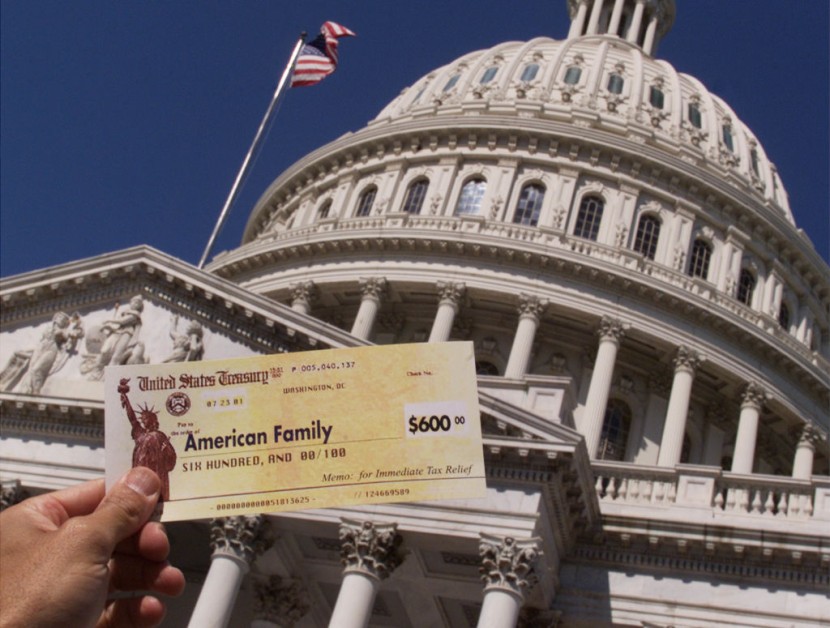
If you received a stimulus payment in Child Tax Credit last year, you might expect to get a smaller tax refund this year.
Last year, as part of the economic relief law, parents received advance payments of the Child Tax Credit (CTC) in six monthly installments for the first time ever. Half of the total benefit was paid out in monthly installments, with the remaining half due to be claimed during tax season.
The maximum Child Tax Credit is normally $2,000, and it may only be claimed during tax season. The maximum benefit in 2021 was $3,600 per qualifying child under the age of six, with $1,800 distributed in $300 monthly installments from July through August, according to Go Banking Rates.
Why Would I Receive a Smaller Tax Return?
The maximum benefit for eligible children aged 6 to 17 was $3,000, with half of it paid out on a comparable (although significantly decreased in terms of payment amounts) schedule. If you received this credit in the past, you might expect a lesser tax refund this year than usual.
This is because you previously earned half of the entire special benefit in monthly installments in 2021, and will now get between $1,500 and $1,800 this year, when you would normally receive at least $2,000 per kid under the age of 17 as an usual return in one shot. When the credit is reconciled, you will receive more than normal, but not in one lump sum - at tax time - as you may be used to.
Some parents may receive a substantially lesser return or perhaps be required to repay some or all of the Child Tax Credit payments they received on a monthly basis.
Each year, divorced parents with joint custody of their children can swap who gets the Child Tax Credit, as per CNN.
The payments may have gone to the parent who didn't have custody in 2021 because the monthly payments were normally based on the parents' 2020 returns. In addition, families that earned much more in 2021 than they did in 2020 may have gotten more in monthly payments than they should have. This might limit how much they can claim on their tax return or force them to repay part of the payouts.
In 2021, the entire increased credit was available for heads of households earning up to $112,500 and joint filers earning up to $150,000, after which it started to taper off. The credit subsequently plateaued at $2,000 per child for many households, and it began to taper out for single parents earning more than $200,000 or married couples earning more than $400,000.
Lower-income families' incomes may be erratic, therefore Congress established protections for them. Excess distributions are not required to be repaid by heads of families with incomes of $50,000 or less, or joint filers with incomes of $60,000 or less.
Read Also: Student Loan Forgiveness: Here's How Parents May Also Qualify for Loan Cancellation
Child Tax Credit Is Still Available
Per Mercury News, the Biden administration wants families with children to know that there is nearly $193 billion in tax relief waiting for them; all they have to do is submit their taxes. The expected amount is what's left of the enhanced Child Tax Credit, and the government is afraid that some of those who need it the most may be the ones who don't get it.
As part of his coronavirus relief package, President Joe Biden enhanced payments and extended who was eligible. Even if most households received half of the credit as monthly payments last year, they would forfeit the remaining sum until they submit their taxes.
Vice President Kamala Harris, Treasury Secretary Janet Yellen, and White House senior adviser Gene Sperling hosted a virtual event on Tuesday to urge individuals to return their tax forms to the IRS, even those with low incomes who may not have filed in the past.
Families should verify their eligibility at childtaxcredit.gov, according to Harris. The deadline for submitting taxes is April 18. The public outcry comes at a critical time for both the economy and the child tax credit program in the United States. Because inflation is at a 40-year high, the extra money from the credit will help offset the costs of food, fuel, and other items until the US recovers from the pandemic.
However, efforts in the Senate to extend the increased credits for another year have been stymied, making it critical for proponents to show how the credits have decreased child poverty by an estimated 40%.
According to research, the payments are one of the most promising measures for addressing poverty, with new findings suggesting that the money is connected to better brain activity in the babies of impoverished women.
Related Article: Unclaimed Stimulus Check: Doubtful If You Get All the Money You Owed? Here's Where to See Missing Payments!
@YouTube








